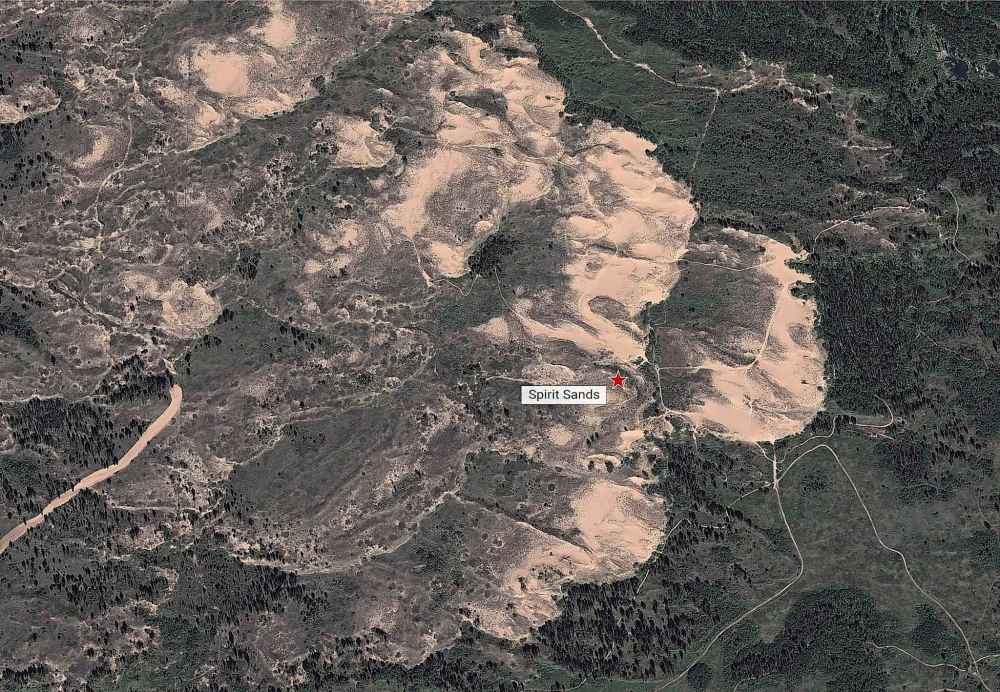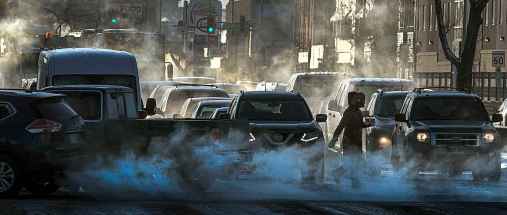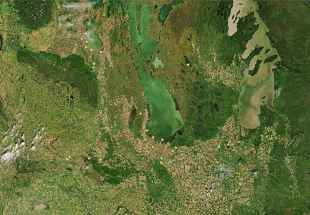Bombing mission The military has identified 24 Manitoba sites that may contain unexploded ordnances from wartime training; while assessment is ongoing, it stresses the land is safe
Read this article for free:
or
Already have an account? Log in here »
To continue reading, please subscribe:
Monthly Digital Subscription
$0 for the first 4 weeks*
- Enjoy unlimited reading on winnipegfreepress.com
- Read the E-Edition, our digital replica newspaper
- Access News Break, our award-winning app
- Play interactive puzzles
*No charge for 4 weeks then price increases to the regular rate of $19.00 plus GST every four weeks. Offer available to new and qualified returning subscribers only. Cancel any time.
Monthly Digital Subscription
$4.75/week*
- Enjoy unlimited reading on winnipegfreepress.com
- Read the E-Edition, our digital replica newspaper
- Access News Break, our award-winning app
- Play interactive puzzles
*Billed as $19 plus GST every four weeks. Cancel any time.
To continue reading, please subscribe:
Add Free Press access to your Brandon Sun subscription for only an additional
$1 for the first 4 weeks*
*Your next subscription payment will increase by $1.00 and you will be charged $16.99 plus GST for four weeks. After four weeks, your payment will increase to $23.99 plus GST every four weeks.
Read unlimited articles for free today:
or
Already have an account? Log in here »
Hey there, time traveller!
This article was published 21/02/2020 (2122 days ago), so information in it may no longer be current.
During the Second World War, allied aircraft roared across Manitoba’s prairie skies, in preparation to fight an enemy thousands of miles away.
Pilots from around the Commonwealth came to the province to learn how to engage in aerial warfare, while soldiers practised with live ammunitions near Portage la Prairie and Dauphin.
Safety first
The military says anyone who has encountered a possible unexploded ordnance over the years should contact the UXO Legacy Sites Program, by e-mailing UXOCanada@forces.gc.ca.
Information and photos can help the Department of National Defence identify UXO sites.
If you come across something that might be an unexploded bomb, DND says to not touch it, turn around, leave the same way you approached the object, and call your local police.
The airfields are long gone, ghosts of our province’s military past. Few structures and rifle ranges still stand, some converted to farm buildings.
Other wartime remnants remain, hidden deep in the soil and at the bottom of lakes.
The military believes the province is safe — but admits most sites haven’t been fully assessed. As soils shift, unexploded ordnances, known as UXOs, have shown up on Manitoba shorelines, picnic sites and farms.
Some of these bombs still explode, in one case drastically altering the life of a family near Brandon more than 10 years ago.
“You can reduce the risk, but you can never eliminate it,” said Matthew Braid, a retired major who oversaw the military’s efforts to remediate UXO sites.
“The problem is unsolvable.”
Ron Ryz, reeve of the rural municipality of Dauphin, is used to seeing “dead bombs” wash up along the western shores of Dauphin Lake.
The area, known as Paulson, has six sites the military believes could have UXOs.
“They weighed probably five pounds, and they had a piece of lead inside, a brass cap on the end and a tail,” said Ryz, 71, with a chuckle. “We used to break them apart, as a kid.”
His relatives recall wartime soldiers posted at two towers along the shore, watching pilots practise bombing targets in the lake.
The shoreline is uninhabited, but he’s often seen farmers harvesting nearby during dry spells. They leave piles of mud and ordnances. “I have never heard of any of these ever exploding,” he said.
However, DND lists all six sites in Paulson as “in assessment,” meaning Ottawa has yet to confirm if any of them contain explosives.
As The Globe and Mail reported in December, the federal government is still sorting out how many sites pose a risk to public safety.

#g-unexploded_ordinances_detail-box ,
#g-unexploded_ordinances_detail-box .g-artboard {
margin:0 auto;
}
#g-unexploded_ordinances_detail-box p {
margin:0;
}
#g-unexploded_ordinances_detail-box .g-aiAbs {
position:absolute;
}
#g-unexploded_ordinances_detail-box .g-aiImg {
position:absolute;
top:0;
display:block;
width:100% !important;
}
#g-unexploded_ordinances_detail-box .g-aiSymbol {
position: absolute;
box-sizing: border-box;
}
#g-unexploded_ordinances_detail-box .g-aiPointText p { white-space: nowrap; }
#g-unexploded_ordinances_detail-mobile-small {
position:relative;
overflow:hidden;
}
#g-unexploded_ordinances_detail-mobile-small p {
font-weight:500;
line-height:10px;
filter:alpha(opacity=100);
-ms-filter:progid:DXImageTransform.Microsoft.Alpha(Opacity=100);
opacity:1;
letter-spacing:0em;
font-size:8px;
text-align:left;
color:rgb(0,0,0);
text-transform:none;
padding-bottom:0;
padding-top:0;
mix-blend-mode:normal;
font-style:normal;
height:auto;
position:static;
}
#g-unexploded_ordinances_detail-mobile-small .g-pstyle0 {
font-weight:700;
line-height:15px;
height:15px;
font-size:15px;
color:rgb(255,255,255);
}
#g-unexploded_ordinances_detail-mobile-small .g-pstyle1 {
height:10px;
color:rgb(255,255,255);
}
#g-unexploded_ordinances_detail-mobile-small .g-pstyle2 {
height:10px;
text-align:right;
color:rgb(255,255,255);
}
#g-unexploded_ordinances_detail-mobile-small .g-pstyle3 {
line-height:9px;
height:9px;
font-size:7px;
color:rgb(255,255,255);
}
#g-unexploded_ordinances_detail-mobile-small .g-pstyle4 {
font-weight:700;
height:10px;
letter-spacing:0.001em;
}
#g-unexploded_ordinances_detail-mobile-small .g-pstyle5 {
height:10px;
letter-spacing:0.001em;
}
#g-unexploded_ordinances_detail-mobile-large {
position:relative;
overflow:hidden;
}
#g-unexploded_ordinances_detail-mobile-large p {
font-weight:500;
line-height:9px;
height:auto;
filter:alpha(opacity=100);
-ms-filter:progid:DXImageTransform.Microsoft.Alpha(Opacity=100);
opacity:1;
letter-spacing:0em;
font-size:7px;
text-align:left;
color:rgb(255,255,255);
text-transform:none;
padding-bottom:0;
padding-top:0;
mix-blend-mode:normal;
font-style:normal;
position:static;
}
#g-unexploded_ordinances_detail-mobile-large .g-pstyle0 {
font-weight:700;
line-height:18px;
height:18px;
font-size:16px;
}
#g-unexploded_ordinances_detail-mobile-large .g-pstyle1 {
line-height:8px;
color:rgb(0,0,0);
}
#g-unexploded_ordinances_detail-mobile-large .g-pstyle2 {
height:9px;
}
#g-unexploded_ordinances_detail-mobile-large .g-pstyle3 {
font-weight:700;
line-height:8px;
height:8px;
letter-spacing:0.001em;
font-size:6px;
color:rgb(0,0,0);
}
#g-unexploded_ordinances_detail-mobile-large .g-pstyle4 {
line-height:8px;
height:8px;
letter-spacing:0.001em;
font-size:6px;
color:rgb(0,0,0);
}
#g-unexploded_ordinances_detail-mobile-large .g-pstyle5 {
height:9px;
text-align:right;
}
#g-unexploded_ordinances_detail-mobile-large .g-pstyle6 {
line-height:10px;
height:10px;
font-size:8px;
}
#g-unexploded_ordinances_detail-desktop {
position:relative;
overflow:hidden;
}
#g-unexploded_ordinances_detail-desktop p {
font-weight:500;
line-height:12px;
filter:alpha(opacity=100);
-ms-filter:progid:DXImageTransform.Microsoft.Alpha(Opacity=100);
opacity:1;
letter-spacing:0em;
font-size:10px;
text-align:left;
color:rgb(0,0,0);
text-transform:none;
padding-bottom:0;
padding-top:0;
mix-blend-mode:normal;
font-style:normal;
height:auto;
position:static;
}
#g-unexploded_ordinances_detail-desktop .g-pstyle0 {
font-weight:700;
line-height:18px;
height:18px;
font-size:22px;
color:rgb(255,255,255);
}
#g-unexploded_ordinances_detail-desktop .g-pstyle1 {
line-height:10px;
height:10px;
font-size:8px;
color:rgb(255,255,255);
}
#g-unexploded_ordinances_detail-desktop .g-pstyle2 {
line-height:11px;
height:11px;
font-size:9px;
color:rgb(255,255,255);
}
#g-unexploded_ordinances_detail-desktop .g-pstyle3 {
font-weight:700;
line-height:11px;
height:11px;
letter-spacing:0.001em;
font-size:9px;
}
#g-unexploded_ordinances_detail-desktop .g-pstyle4 {
line-height:10px;
height:10px;
font-size:8px;
text-align:right;
color:rgb(255,255,255);
}
#g-unexploded_ordinances_detail-desktop .g-pstyle5 {
line-height:11px;
height:11px;
letter-spacing:0.001em;
font-size:9px;
}
/* Custom CSS */
.gi.ai2html { margin-bottom: 1em; }
.gi.ai2html p {
text-shadow: 1px 1px 0px rgba(255,255,255,0.7), -1px -1px 0px rgba(255,255,255,0.7), -1px 1px 0px rgba(255,255,255,0.7), 1px -1px 0px rgba(255,255,255,0.7);
}
.gi.ai2html #no-shadow p { text-shadow: none !important; }
@media screen and (max-width: 335px) {
#gi-02-21-unexploded-ordnance-mobile-small,
#gi-02-21-unexploded-ordnance-mobile-large,
#gi-02-21-unexploded-ordnance-desktop {
display: none;
}
#gi-02-21-unexploded-ordnance-mobile-small {
display: block;
}
}
@media screen and (min-width: 335px) and (max-width: 500px) {
#gi-02-21-unexploded-ordnance-mobile-small,
#gi-02-21-unexploded-ordnance-mobile-large,
#gi-02-21-unexploded-ordnance-desktop {
display: none;
}
#gi-02-21-unexploded-ordnance-mobile-large {
display: block;
}
}
@media screen and (min-width: 501px) {
#gi-02-21-unexploded-ordnance-mobile-small,
#gi-02-21-unexploded-ordnance-mobile-large,
#gi-02-21-unexploded-ordnance-desktop {
display: none;
}
#gi-02-21-unexploded-ordnance-desktop {
display: block;
}
}

Unexploded ordnances across Manitoba
Paulson RCAF Station
PBR 1, 2, 3, 4, 5, 6 and 7
Gimli-Sleeve Lake
Air Gunnery and
Bombing Range
Virden Airport
and Rifle Range
Brandon Artillery School
and Rifle Range
Langruth – RCAF Range
Macdonald RCAF
Aerodrome B&GS
PBR 1, 2 and 3
CFB Rivers
Shilo-Carberry Airfield
Camp Hughes/Sewell
PBR: Practice Bombing Range
B&GS: Bombing and Gunnery School
BCATP: British Commonwealth Air Training Plan
WINNIPEG FREE PRESS — SOURCE: DEPARTMENT OF NATIONAL DEFENCE
The federal government lists four confirmed locations of unexploded ordnance across Manitoba. More than 20 other locations across the province are suspected and under assessment.
Many of these sites are now used for farming, but evidence of their wartime past still surface along coastlines and shifting soils.
Unexploded ordnance
Confirmed
In assessment

Unexploded ordnances across Manitoba
The federal government lists four confirmed locations of unexploded ordnance across Manitoba. More than 20 other locations across the province are suspected and under assessment.
Paulson RCAF Station
PBR 1, 2, 3, 4, 5, 6 and 7
Gimli-Sleeve Lake
Air Gunnery and
Bombing Range
Unexploded ordnance
Confirmed
In assessment
Langruth – RCAF Range
Macdonald RCAF Aerodrome
B&GS PBR 1, 2 and 3
Virden Airport
and Rifle Range
Brandon Artillery School
and Rifle Range
CFB Rivers
Shilo-Carberry Airfield
Camp Hughes/Sewell
PBR: Practice Bombing Range
B&GS: Bombing and Gunnery School
BCATP: British Commonwealth Air Training Plan
WINNIPEG FREE PRESS — SOURCE: DEPARTMENT OF NATIONAL DEFENCE

Unexploded ordnances across Manitoba
The federal government lists four confirmed locations of unexploded ordnance across Manitoba. More than 20 other locations across the province are suspected and under assessment.
Many of these sites are now used for farming, but evidence of their wartime past still surface along shorelines and shifting soils.
Paulson RCAF Station
PBR 1, 2, 3, 4, 5, 6 and 7
Churchill
Detail
Gimli-Sleeve Lake
Air Gunnery and
Bombing Range
Unexploded ordnance
Langruth – RCAF Range
Confirmed
In assessment
Macdonald RCAF Aerodrome
B&GS PBR 1, 2 and 3
Virden Airport
and Rifle Range
CFB Rivers
Camp Hughes/Sewell
Shilo-Carberry Airfield
Brandon Artillery School
and Rifle Range
PBR: Practice Bombing Range
B&GS: Bombing and Gunnery School
BCATP: British Commonwealth Air Training Plan
WINNIPEG FREE PRESS — SOURCE: DEPARTMENT OF NATIONAL DEFENCE
DND tabulated a list of UXO sites last year, coming up with 521 areas that span the depths of the Pacific Ocean to the tip of Newfoundland; 24 are located in Manitoba.
The bombs date back to the First World War, though many are from mid-century, and some were dropped in rural areas that have become suburbs.
Three suspected UXO sites in Manitoba surround the former RCAF Station Macdonald, within the Rural Municipality of Portage la Prairie (not the RM of the same name that borders Winnipeg).
“I would’ve thought that the military would have done their due diligence before they even sold that property,” said the area’s councillor, Roy Tufford.
Hutterites converted most of the site into farmland in the 1970s, which they now call the Airport Colony. The local farm manager, Jake Hofer, said all the former buildings and structures were disassembled decades ago, including walls with targets marked on them.
“That’s all been cleaned out and hauled away or dismantled,” said Hofer, who believes the military has never reached out to the colony about UXOs.
He was also skeptical it would be worth having government-paid officials inspect the site. “There’s nothing here; absolutely nothing,” he said.
Elsewhere in the RM of Portage, a farmer was tilling crops when his machine came across a grenade in 2011. The farmer turned it into the local RCMP detachment, which the Mounties evacuated before 17 Wing experts from Winnipeg came, removed the bomb and detonated it.
Tufford has his own childhood memory of coming across UXO remnants south of Carberry, close to CFB Shilo, at the Spirit Sands.
It’s one of four Manitoba sites where the military has confirmed the existence of UXOs, instead of just flagging them as a potential risk.
Tufford was on a family picnic in the 1960s in the sand dunes near a decommissioned airfield.
“I remember my younger brother going there exploring, and coming back with essentially shrapnel and stuff from shells, and my parents being somewhat upset,” he said. “It in fact could have been an unexploded ordnance.”

The site sits within Spruce Woods Provincial Park, where a provincial spokesman insisted scrap metal and shell casings haven’t been found in decades. There are signs asking people to stay on the trails, explaining that it’s a former defence range.
“The risk to the public is extremely low,” the spokesman wrote. “While some scrap metal and shell casings were found in the ’70s and ’80s, it has been many years since any trace of anything potentially dangerous was discovered.”
In Churchill, another confirmed UXO site, the military did a thorough sweep decades ago of the trails where polar-bear tour operators like Don Walkoski drive their tundra buggies.
Walkoski recalls finding unexploded shells while out on motorbikes and dirt bikes in the expanse east of the town in the late 1970s.
“We’d just pick them up and carry them around,” he said.
The site was used throughout the Cold War as a test site for missiles and rockets, as well as artillery-training grounds, but now houses a scientific-research centre.
Walkoski said he’s found at least six ordnances over the past two decades; each time the RCMP have called in the military, who come up within a day to detonate the bombs. His last find was about five years ago.
“They just appear; they get pushed out by the frost,” said Walkoski. He said the rusty shells often blend in with the tundra and ponds.
“You have to almost stumble right on them, before you see them,” he said.

It was an ordinary day on the farm when a Manitoba teenager struck a decades-old bomb.
“I’m so lucky to be alive; it’s crazy,” said Matthew Dickenson, who was 16 when his tractor touched upon an unexploded ordnance on April 29, 2007.
Dickenson was driving over farmland near the end of the decommissioned airstrip of the former CFB Rivers base, 30 kilometres northwest of Brandon.
That’s where the Royal Canadian Air Force started training pilots and parachutists from across the British Commonwealth in 1942.
Officials believe trainees used white-phosphorus bombs to mark their strikes. The substance ignites in the air, and is often used to detonate napalm.
The base closed in 1971 and was then used as an industrial training centre for First Nations, who made roughly 50,000 Sekine-brand bicycles. It was farmland for two decades before Dickenson’s incident.
He recalls corn stalks catching fire, and something on the ground that resembled a softball-sized canister. He didn’t know that it was a bomb leaking white phosphorus.
Dickenson was standing about nine metres away from the tractor when the bomb exploded.
An internal military report shows photos of his coveralls, with the crotch burned out and the front blackened.
Dickenson was airlifted to the Health Sciences Centre and induced into a coma for a week. He almost lost an eye. His hair stood straight up for weeks.
According to internal documents, officials suspected a harrow used to break up soil had dug deeper than previous farming, shuffling the bomb closer to the surface over two years.
The army remediated the site, which is still farmed today. The former airstrip is used for drag-racing and a manufacturing plant for agricultural equipment.
Part of the field is fenced off, and only to be used for livestock.
Dickenson says the incident drastically altered his life. In an interview, he was candid about his criminal record and drug-use issues, which he says stemmed from the facial disfiguration that ruined his teenage confidence and made him self-isolate.
“It was just a real downhill, slippery slope; a lot of violence,” said Dickenson, who has been sober since December 2018.
“They established those sites when we were fighting the Nazi horror. So it was all hands on deck. You would never stop to think about what that would mean environmentally or from an explosion-safety risk.” – Matthew Braid, a retired major who oversaw the military’s efforts to remediate unexploded ordnance sites
He later asked the Free Press to not detail his trauma and how he acted out against the wider community.
“I’d take it out on other people, on people I love. (I was) a very toxic person,” he said.
Dickenson’s girlfriend, Desiree Noakes-Black, said it was a direct result of the incident.
“He didn’t care about his own life,” she said.
When he drank, Dickenson would tell his girlfriend stories. The corn stalks going up in flames. Waking up in the hospital. The looks from passersby. The cheap thrills from booze and drugs.
“A lot of unconditional love from my parents and loved ones made it easier to accept myself, and the things I’ve done,” said Dickenson, 29, who cherishes his two sons.
Noakes-Black says rural Canadians shouldn’t have to worry about hitting a decades-old explosive when they’re at work, or out on a hike.
“It’s not something someone should have to go through. The military should take responsibility for all of it, and clean up the mess.”
Figuring out where UXOs exist is complicated, never mind remediating those sites.
Braid, who helped oversee those efforts between 2004 and 2009, said the wartime officials didn’t take detailed records about training exercises.
“They established those sites when we were fighting the Nazi horror. So it was all hands on deck,” said Braid.
“You would never stop to think about what that would mean environmentally or from an explosion-safety risk.”
A military spokeswoman said officials assess possible UXO sites based on military records and interviewing locals who lived in the vicinity.
That often leads the military to install warning signs, while they remediate the sites most likely to cause injury.
“You can never know how much was used, what was used, and where it was used, except in a very general sense.” – Matthew Braid, a retired major who oversaw the military’s efforts to remediate unexploded ordnance sites
“The decision to work on a legacy site is based on the level of risk to the public,” wrote Jessica Lamirande.
“People should always use good judgment and caution whenever using a former military site. Users are encouraged to stay on designated trails, and refrain from digging or making campfires in these areas.”
Municipalities, First Nations and private landowners have been pushing for DND to clean up the sites. Ottawa estimated last year this would cost $115 million, but that excludes sites where the military lacks enough data to estimate costs.
Previous remediations have cost years and millions more than anticipated. The work is only partially automated.
In 2004, inspectors at a site in rural New Brunswick that had been reported as cleared just a few years prior found 15,000 pieces of shrapnel or unexploded shells.
DND estimates it will take until 2032 to assess the sites, in order to prioritize them for remediation. The military expects it only has to clear about 30.
Braid said the military’s UXO budget of roughly $13 million a year is probably in line with the availability of technical experts who can actually do these assessments.
He doesn’t think it’s possible to speed up the process, given the patchy record-keeping of decades past. That’s why his colleagues put their focus on community awareness and gathering information from locals.
“You can never know how much was used, what was used, and where it was used, except in a very general sense,” said Braid.
By the military’s own count, there have been 19 UXO incidents since 1927, which have killed 18 people and injured 27, with Dickenson being the most recent.
He hopes his incident is the last time a Canadian is injured by a UXO, even if it costs billions to make that guarantee. “You can’t put a price on life,” he said.
dylan.robertson@freepress.mb.ca
Military report on 2007 explosion in Rivers, Manitoba
History
Updated on Friday, February 21, 2020 10:28 PM CST: Fixes typo
Updated on Saturday, February 22, 2020 2:18 PM CST: Moves ai2html script
Updated on Saturday, February 22, 2020 2:28 PM CST: Updates ai2html







